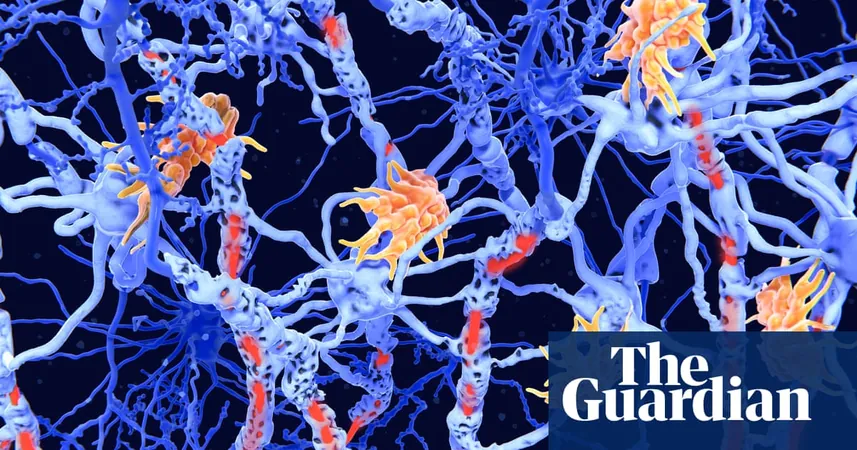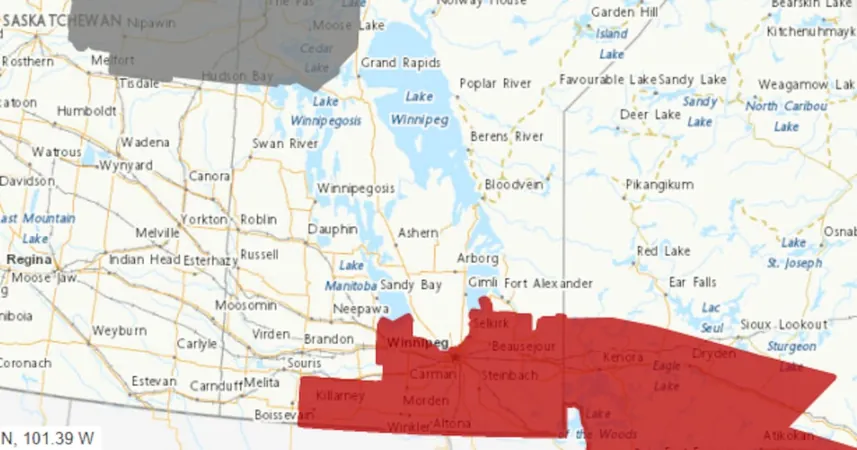
Mathematicians Unravel New Insights into Prime Numbers with Groundbreaking Proof
2025-01-19
Author: Liam
Mathematicians Unravel New Insights into Prime Numbers with Groundbreaking Proof
In an exciting development for the mathematical community, two prominent mathematicians have achieved a major breakthrough in the understanding of prime numbers, often referred to as the "atoms of arithmetic." Ben Green from the University of Oxford and Mehtaab Sawhney from Columbia University have recently posted a proof online that deepens our understanding of prime distribution while also utilizing innovative techniques from a separate mathematical domain.
Prime numbers, defined as those greater than one that are only divisible by themselves and 1, have long been considered both fundamental and perplexing in mathematics. They seem to appear sporadically across the number line, leading mathematicians to question whether there are hidden patterns behind their distribution. Despite Euclid's proof of the infinite nature of primes around 300 BCE, pinpointing their exact locations remains a formidable challenge.
Green and Sawhney's proof specifically focuses on a type of prime number called "sums of squares." In previous works, mathematicians have explored the existence of infinite primes formed by the equation p^2 + 4q^2 where both p and q are primes. While this area of study had seen progress, particularly efforts by John Friedlander and Henryk Iwaniec in 2018, the introduction of extra constraints had led to dead ends.
Their collaboration began after a serendipitous meeting at a conference in Edinburgh, where they discussed their respective admiration for each other's work and decided to tackle this challenging problem together. The mathematicians recognized that traditional techniques used in counting primes weren't applicable due to the strict nature of their constraints, prompting them to think outside the box.
Instead of directly counting primes, they found a workaround by introducing a concept known as "rough primes," which significantly simplifies the problem. Rough primes are essentially integers that are not divisible by the first few prime numbers, making them easier to identify and work with compared to the standard prime numbers.
Through clever use of a mathematical tool known as the Gowers norm—which measures how structured or random a function or set of numbers is—they demonstrated that the behavior of their rough primes was similar enough to regular primes. Using insights from previous mathematical theories, they proved the conjecture made by Friedlander and Iwaniec: that there are indeed infinitely many primes expressible in the form p^2 + 4q^2.
Moreover, their findings open doors to further research in number theory, suggesting that the Gowers norm may have even broader applications than previously realized. As mathematicians continue to explore the depths of number theory, this recent advancement paints an optimistic picture for future discoveries.
Experts like John Friedlander express excitement over these new developments, highlighting the potential for the Gowers norm to influence other realms of mathematics, while Terence Tao and Tamar Ziegler commend the innovative link established between disparate areas of math.
In a world where understanding the intricate nature of prime numbers could pave the way for new theories and advancements, this breakthrough is not just a victory for Green and Sawhney but a monumental leap forward in the quest for mathematical clarity. Who knows what other mysteries await in the enchanting world of numbers? Only time—and further research—will tell.









 Brasil (PT)
Brasil (PT)
 Canada (EN)
Canada (EN)
 Chile (ES)
Chile (ES)
 Česko (CS)
Česko (CS)
 대한민국 (KO)
대한민국 (KO)
 España (ES)
España (ES)
 France (FR)
France (FR)
 Hong Kong (EN)
Hong Kong (EN)
 Italia (IT)
Italia (IT)
 日本 (JA)
日本 (JA)
 Magyarország (HU)
Magyarország (HU)
 Norge (NO)
Norge (NO)
 Polska (PL)
Polska (PL)
 Schweiz (DE)
Schweiz (DE)
 Singapore (EN)
Singapore (EN)
 Sverige (SV)
Sverige (SV)
 Suomi (FI)
Suomi (FI)
 Türkiye (TR)
Türkiye (TR)
 الإمارات العربية المتحدة (AR)
الإمارات العربية المتحدة (AR)